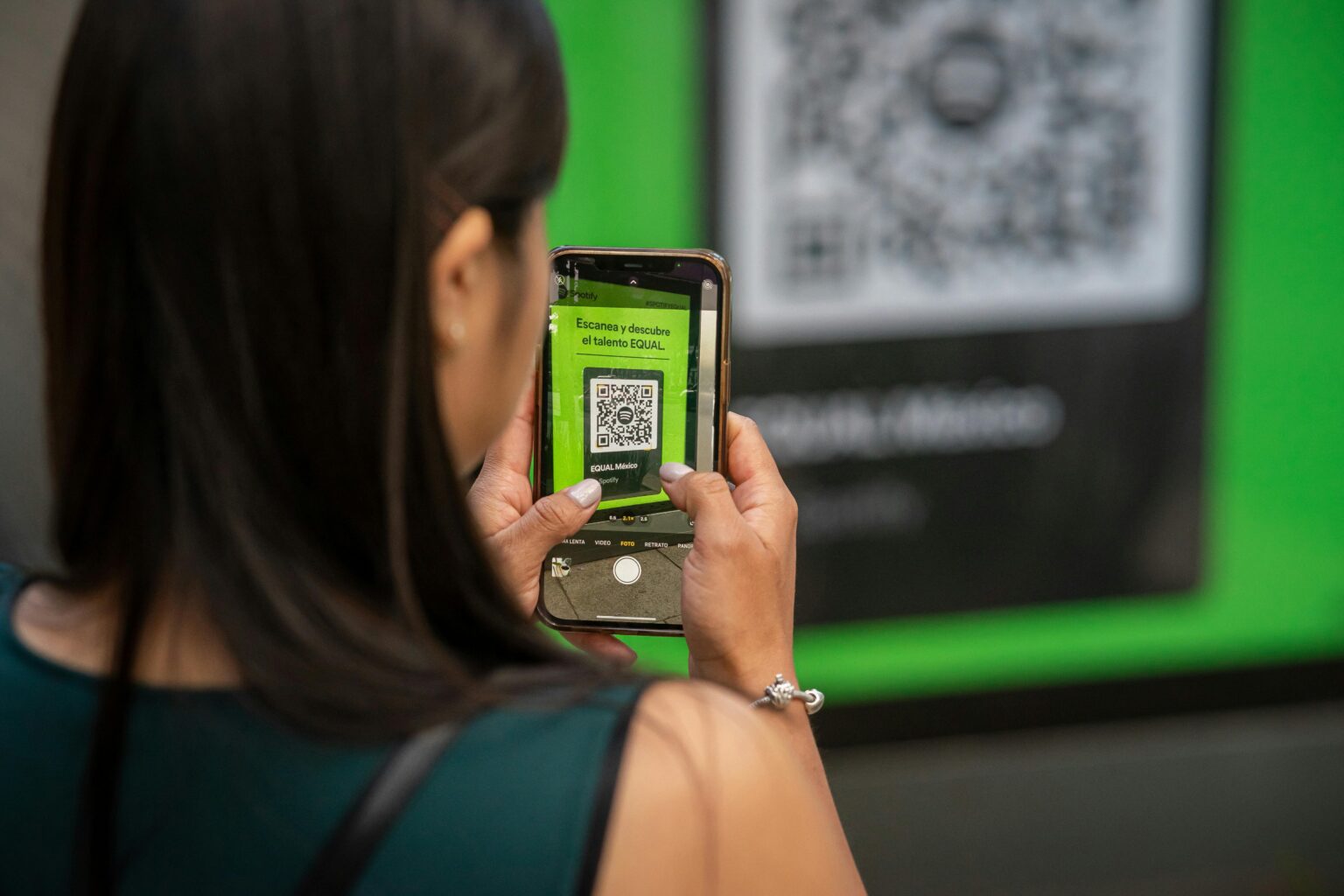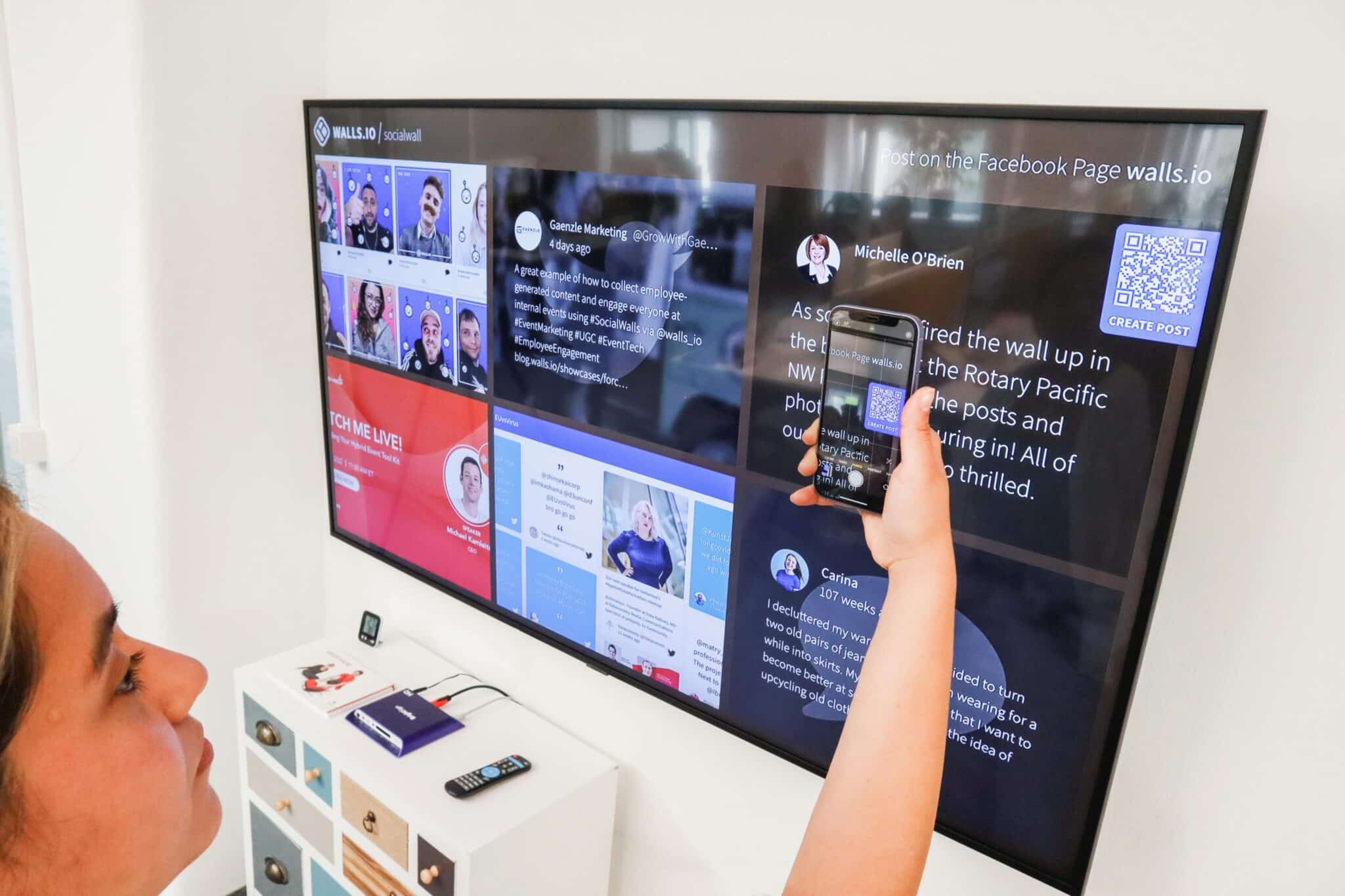Updated: September 17, 2025
Originally Published: November 6, 2011
 QR Codes, those square graphics resembling barcodes, have become a dynamic tool in linking the physical and digital worlds. Simply put, they facilitate immediate access to online resources when scanned with a smartphone. This seamless integration proves useful for businesses looking to enhance their marketing strategies and direct potential customers to their websites with minimal effort.
QR Codes, those square graphics resembling barcodes, have become a dynamic tool in linking the physical and digital worlds. Simply put, they facilitate immediate access to online resources when scanned with a smartphone. This seamless integration proves useful for businesses looking to enhance their marketing strategies and direct potential customers to their websites with minimal effort.
The versatility of QR Codes lies in their capability to be unique identifiers for an array of offerings, from product details to service information, exclusive promotions, and much more. They're increasingly being leveraged to create an interactive experience for customers. For instance, automobile dealerships can place QR Codes on vehicle window stickers, which, when scanned, reveal comprehensive vehicle information, imagery, and contact options—providing a rich browsing experience even outside regular business hours.
Additionally, QR Codes connect physical products to the digital space effectively. Attaching them to product labels, such as spice bottles, can guide consumers to a plethora of resources like purchase points, recipes, and instructional videos. This extension into the digital realm enriches the customer's interaction with the product and boosts brand engagement.
Businesses also incorporate QR Codes into various aspects of their customer interface:
- At the Entrance: Door-mounted QR Codes offer after-hours visitors vital information including operational hours and contact details.
- Billing: Invoices and receipts with QR Codes can direct customers to feedback and reviews, surveys, or service pages.
- Packaging: QR codes on product packaging or envelopes can enhance the unboxing experience by providing additional product information or even discounts on future purchases.
Moreover, QR Codes pave the way for innovative marketing:
- Scavenger Hunts: Engage customers with QR-based scavenger hunts that encourage interaction with multiple touchpoints of business.
- Promotions: Share exclusive deals and coupons with a simple scan, driving sales and customer retention.
- Social Media: Increase social network presence by making it easier for customers to like and follow business pages.
The implementation of QR Codes in marketing is only as effective as the public’s ability to use them. Hence, it is advisable to include instructions on QR Code usage near each code to facilitate a friendly user experience.
When it comes to generating these codes, there are a number of online resources—the QR code generator (referral link) being one such platform where businesses can customize and download QR codes with ease.

Understanding QR Codes
A QR Code, or Quick Response Code, is a two-dimensional barcode that can store information in a machine-readable optical label. The data encoded often directs users to a website or provides information about a product or service. Here are some key points about QR Codes:
- Versatile Use: QR Codes can be used to display text to the user, to open a URL, save a contact to the user's device, or to trigger a function in an application.
- Ease of Use: They can be scanned using a smartphone camera, making them highly accessible for individuals on the go.
- Capacity: Compared to traditional barcodes, QR Codes can store a more significant amount of data in a smaller space.
- Variety: There are various types of QR Codes, such as static QR Codes, which do not change over time, and dynamic QR Codes, which can be edited even after being printed.
- Engagement: QR Codes can enhance customer engagement by providing a quick and effortless way to access a brand's online content.
By integrating QR Codes into marketing materials, companies can direct traffic to their website effectively, allowing for a seamless transition from physical to digital platforms.
Utilizing QR Codes in Marketing Strategies
QR codes present an effective tool for marketers aiming to bridge the gap between physical and digital spaces. Below are some key reasons why integrating QR codes into marketing efforts can be advantageous:
- Instant Access: QR codes offer customers immediate access to additional online content, providing a seamless transition from print to digital.
- Enhanced Engagement: By scanning a QR code, customers interact directly with the brand, which can deepen their engagement and increase the time spent with the brand.
- Easy Tracking: Marketers can track the performance of QR codes by monitoring scans and the resulting online activity, helping to gauge campaign effectiveness.
- Cost Efficiency: QR codes are inexpensive to produce and can be printed on a vast array of materials, allowing for versatile and budget-friendly campaigns.
By leveraging QR codes, companies can drive traffic directly to specific landing pages, promotions, or informational content, effectively channeling potential customers from physical advertisements to their online platforms. It's important for marketers to ensure the destination content is mobile-friendly and provides value, which increases the likelihood of converting casual scanners into loyal customers.
For instance, QR codes can be pivotal in print advertising to direct potential customers to a website. Moreover, as with any digital tool, careful planning and testing are crucial to ensure a smooth user experience. Through strategic implementation, QR codes can serve as a powerful tool in the modern marketer's toolkit to enhance their overall marketing, branding, and customer acquisition efforts.
QR Code Capabilities and Applications
QR Codes have become an indispensable tool for marketers and businesses looking to direct potential customers to their websites. These versatile matrices offer a variety of features that enhance user experience and provide valuable data for analytics.
- User Engagement: With a simple scan using a smartphone camera, users are instantly directed to a specific webpage, significantly simplifying the process of accessing information.
- Customization: Businesses can create custom branded QR codes, incorporating logos or color schemes that align with their brand identity, making the QR code not only a tool but also a part of the brand's visual presentation.
- Data Tracking: When integrated with QR code scanners, companies can obtain valuable analytics and tracking data on user interaction, such as scan frequency, geographic location of scans, and the devices used. This helps businesses to assess the effectiveness of their campaigns.
- Dynamic Content: QR Codes can be programmed to be dynamic, enabling marketers to change the destination URL without altering the QR Code itself. This allows for ongoing campaign adjustments and content updates.
- Versatility: QR codes have a wide range of applications. They can direct users to landing pages, social media profiles, instant coupons, event details, and much more, contributing to a diverse and engaging user experience.
By using QR codes, companies can not only facilitate easy access to their digital content but also gather insights about consumer behaviors, resulting in more targeted and effective marketing strategies.
Strategic QR Code Placement for Increased Web Traffic
QR Codes, when placed thoughtfully, can lead to a significant increase in web traffic. They serve as a bridge between physical and digital content, allowing users to scan and be directed straight to a website. Below are prime examples of how QR Codes can be strategically placed to optimize visibility and engagement:
- Product Packaging: Incorporate QR Codes on product labels to direct consumers to product information, tutorials, or related products on your website.
- Business Cards: Embed a QR Code on business cards to connect contacts directly to your professional portfolio or company page.
- Marketing Materials: Use QR Codes on flyers, posters, and brochures at events or in-store, leading to exclusive offers on your website.
- Real Estate Signs: For property listings, attach QR Codes to signage for potential buyers to instantly view detailed property information or schedule tours through your site.
- Window Displays: Place QR Codes on retail store windows to captivate passersby with an invitation to view online catalogs or promotions.
- Billboards and Public Ads: Integrate QR Codes into outdoor advertising for on-the-go consumers to access your website with a simple scan.
- Email Signatures: Include a small QR Code in email signatures as an easy method for recipients to discover more about your offerings.
- Signage and Maps: For local businesses, parks, resorts, or outdoor destinations, place QR Codes on trail maps, hallways, and signs to provide visitors with further information about the area.
Each placement should be considered based on the target audience and the context in which they are likely to engage with the QR Code. Effective utilization of QR Codes can result in a seamless transition to your website, enhancing user interaction and potentially increasing traffic and conversions.
Create your branded and custom designed QR Code today!
Use the RVTech Connect Hub CRM tool with the QR Code Feature.
QR Code FAQs
To monitor the number of visitors accessing your site through QR codes, there are a couple of options. You can use URL tracking tools like UTM parameters. These parameters can be added to the URL that the QR code directs to, enabling analytics platforms to attribute visits to the specific QR code campaign. You can also use a QR code generator that offers analytics and tracking of the use of the QR Code.
In conclusion, QR Codes serve as bridges between tangible items and the limitless expanse of the internet, providing businesses with a modern tool to foster customer engagement. Whether placed on advertisements, product labels, or storefronts, these codes hold the potential to significantly amplify website traffic and deepen the customer's brand experience.
Choosing Your Tool: Free vs. Paid QR Code Generators
When you decide to use QR codes for your business, one of the first questions you'll face is whether to use a free generator or invest in a paid service. The right choice depends on your specific goals, the scale of your campaign, and how much control you need over the user experience. Let's explore the differences to help you make an informed decision that aligns with your community-focused marketing strategy.
Free QR Code Generators: Simple and Straightforward
Free QR code generators are an excellent starting point for many rural businesses, especially for simple, one-time uses. They are typically web-based, easy to use, and require no financial investment.
Example: Canva
Many of you already use Canva for creating social media graphics, flyers, and other marketing materials. It’s a familiar tool, and its built-in QR code generator reflects that same simplicity. With Canva, you can create a QR code in seconds by simply entering a URL. You get basic customization options, like changing the color to match your brand, and you can easily add it to any design you're working on.
When to Use a Free Generator:
- One-Time Events: Creating a code for a poster advertising a local festival or a single-use coupon.
- Static Information: Linking to your business's location on Google Maps or your main website page from a business card.
- Small-Scale Needs: When you only need a handful of QR codes and don't plan on changing the destination link.
The key limitation of most free generators is that they create static QR codes. This means once the code is generated and printed, the link embedded within it cannot be changed. If the webpage URL changes or the link breaks, the QR code becomes useless, and you would need to create and print a new one.
Paid QR Code Services: Advanced Features for Growth
As your marketing efforts become more sophisticated, you may find the limitations of free tools restrictive. Paid services offer a suite of advanced features designed to provide deeper insights, greater flexibility, and a more professional user experience.
Example: ME-QR
Platforms like ME-QR are built for businesses that want to integrate QR codes into their core marketing strategy. For a subscription fee, you unlock powerful capabilities that help you engage your community more effectively.
Key features of paid services often include:
- Dynamic QR Codes: This is the most significant advantage. A dynamic QR code allows you to change the destination URL at any time, even after the code has been printed on hundreds of flyers or product packages. If a promotion ends or you launch a new menu, you can update the link in your dashboard, and the existing QR code will automatically redirect to the new content.
- Advanced Analytics: Paid platforms provide valuable data on how your QR codes are performing. You can track the number of scans, the locations where they are being scanned, the times of day people are engaging, and the types of devices being used. This information is vital for understanding your audience and measuring the return on your marketing investment.
- Ad-Free Experience: Many free services show an ad to the user between scanning the code and landing on your page. Paid services remove this, offering a seamless, professional experience that keeps the focus entirely on your brand.
Integrated CRM Solutions: The Ultimate in Marketing Automation
For businesses looking to fully optimize their digital marketing, QR codes can be integrated directly into a Customer Relationship Management (CRM) platform. This transforms the QR code from a simple link into a powerful tool for lead generation and customer journey mapping.
Example: RVTech Connect Hub CRM
Platforms like our agency CRM, RVTech Connect Hub, take QR code functionality to the next level. By creating a QR code within the CRM, you can automate entire marketing sequences.
Imagine this scenario: a visitor at a local event scans a QR code on your booth's banner.
- The QR code directs them to a landing page (also built in the hub) offering a special discount in exchange for their email address.
- Once they submit their information, they are automatically added to your CRM as a new lead.
- An automated workflow is triggered, sending them a thank-you email with the discount code, followed by a series of nurturing emails over the next few weeks that share success stories from other local businesses.
This level of integration connects your physical marketing efforts directly to your digital campaigns. It allows you to not only track scans but to attribute leads and sales directly to a specific QR code, providing clear evidence of its impact and helping you build a stronger, more engaged local customer base.
Start creating your QR Code Today
Enhance your brand's visibility, streamline access to your digital content, and gain actionable insights with each scan. Don't miss out on the opportunity to propel your marketing strategies into the future. Join us now and make every scan a step toward achieving your business goals.

Let's connect on a call!
Let's talk about how Redwood Valley Technical Solutions can help you accelerate your business online.
-
Schedule a 15 minute call
-
Discuss how we can help solve your current website and digital marketing problems
-
Take a look at our system and processes to launch your brand online
-
Talk about pricing and the budget — as well as ROI
-
Review the timelines and commitments needed to succeed



